Study MBBS in Iran for Indian Students 2026 - 27:
Admission, Eligibility, Fee Structure, and Scholarships at Top Colleges and Top Medical Universities in Iran
MBBS in Iran is gaining recognition as a highly affordable and academically strong option for Indian students looking to study MBBS abroad. With NMC-approved medical universities, a focus on research and clinical exposure, and English-medium programs, MBBS in Iran for Indian Students offers a perfect balance of cost-effectiveness and quality education. Iranian universities maintain high academic standards and follow a modern curriculum aligned with global medical guidelines. The MBBS in Iran fees are very economical, typically ranging from ₹18 to ₹25 lakhs for the full 6-year course, including tuition and hostel costs. Top universities such as Tehran University of Medical Sciences, Shiraz University of Medical Sciences, and Isfahan University of Medical Sciences are known for their infrastructure, experienced faculty, and increasing Indian student enrollment. These universities offer excellent FMGE preparation, strong academic mentorship, and growing international collaborations. This article covers all aspects of Iran MBBS admission, eligibility, hostel facilities, visa process, and student support services. It also outlines how University Insights assists Indian students in securing direct admission to the best MBBS universities in Iran for the 2026–27 session.
About Iran
Cultural Insights and Geographical Overview of Iran
Iran, an Islamic republic, stands as the easternmost country in the Middle East. Its northern boundary is marked by the Caspian Sea, while the Persian Gulf and the Gulf of Oman lie to the south. Historically known as Persia, Iran shares land borders with Afghanistan, Armenia, Azerbaijan, Iraq, Pakistan, Turkey, and Turkmenistan. Additionally, it has maritime boundaries with Kazakhstan and Russia in the Caspian Sea, and Bahrain, Kuwait, Oman, Qatar, Saudi Arabia, and the United Arab Emirates.
The population of Iran is approximately 83 million (as of 2020). The capital city, Tehran, is the largest metropolis and serves as the political and economic center of the country. Iran’s rich cultural heritage is reflected in its 22 UNESCO World Heritage Sites, highlighting its historical significance and contributions to world civilization.
The Educational System to Study MBBS in Iran 2026
Iran has a well-established educational system that reflects its commitment to education and development. The country’s system of education is overseen by the Ministry of Education and the Ministry of Science, Research, and Technology. Primary education is compulsory and free for all children, which ensures high enrollment rates at the foundational level.
Secondary education in Iran is divided into two cycles: the first cycle includes guidance schools, and the second cycle comprises high schools, which offer general, technical, and vocational education tracks. Higher education is provided by universities and other institutions, many of which are highly regarded in the region. The emphasis on education in Iran is evident in its significant investment in educational infrastructure and resources, aiming to cultivate a knowledgeable and skilled population.
Want To Study in Iran?
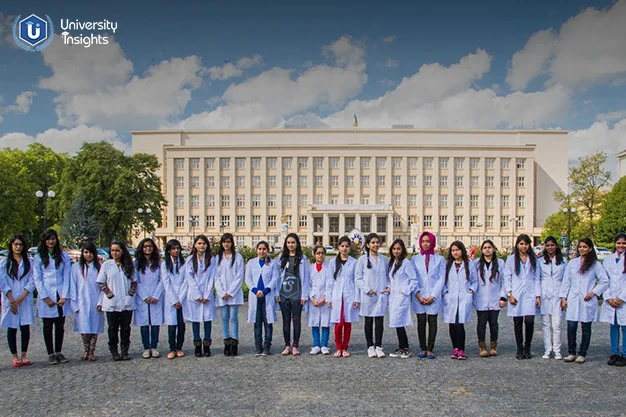
Why Study MBBS in Iran 2026-27?
High Standards of Medical Education
Iran provides one of the most economical and advanced medical education experiences. Recognized by WDOMS, FAIMER, ECFMG, and MCI, the medical universities in Iran rank among the best in the world. These institutions offer a comprehensive curriculum that includes five years of theoretical and technical education, followed by two years of practical internships. This blend of education ensures that students are well-prepared for their medical careers. Additionally, the use of advanced technological resources in classrooms enhances the learning experience, making it more engaging and effective for students. The quality of education is maintained at a high level, making Iran a competitive destination for medical studies.
Key Highlights:
- Globally Recognized Universities: All universities are recognized by WHO, WDOMS, FAIMER, ECFMG, and the Medical Councils of leading countries such as the USA, UK, Middle East, Australia, India, Canada, etc.
- Comprehensive Curriculum: Includes five years of theoretical and technical education, followed by two years of practical internships.
- Advanced Technological Resources: Classrooms equipped with advanced technological tools to enhance learning.
Affordable Tuition of Studying MBBS in Iran Compared to Western Countries
One of the significant advantages of studying MBBS in Iran is its affordability. Compared to Western countries, the cost of medical education in Iran is significantly lower. This makes it an attractive option for international students, particularly those from India. Despite the lower tuition fees, the quality of education remains high, providing excellent value for money. The cost of living in Iran is also relatively low, further reducing the financial burden on students. Hostels and accommodations are well-equipped to meet the needs of international students, ensuring a comfortable stay. Iran’s commitment to developing its public healthcare system means that students have access to advanced hospitals and well-equipped medical schools. The resourceful healthcare sector provides students with the necessary tools and environments to excel in their studies and future careers.
Key Highlights:
- Affordable Tuition: Lower cost compared to Western countries without compromising on education quality.
- Low Cost of Living: Affordable living expenses for students.
- Comfortable Accommodations: Well-equipped hostels to meet the needs of international students.
Safe and Conducive Learning Environment
Iran offers a safe and secure learning environment for all its students. The best medical universities in Iran provide a reliable educational practice and lifestyle, ensuring that students can focus on their studies without concerns for their safety. The country’s emphasis on the development of the public healthcare system has resulted in extremely advanced hospitals and medical universities. These institutions are well-equipped with modern facilities and infrastructure, providing an ideal environment for medical education. The advanced learning experience is further enhanced by the use of technological resources in classrooms, making the learning process more interesting and effective for students.
Key Highlights:
- Safe Learning Atmosphere: Secure and reliable educational environment.
- Modern Facilities: Advanced hospitals and medical universities with modern infrastructure.
- Engaging Learning Process: Use of technological resources in classrooms for a more engaging learning experience.
Diverse Career Opportunities after Studying MBBS in Iran 2026
Iran offers a diverse selection of career opportunities for students upon graduation. The country’s medical universities are excellent in terms of infrastructure, technical advancements, and qualified lecturers, making it a popular choice among students worldwide, especially from India. The MBBS program in Iran is designed to prepare students for various professional paths in the medical field. With the country’s advanced healthcare sector and comprehensive medical education, graduates have the skills and knowledge to pursue a wide range of careers in medicine. The language of instruction in most universities is English, which makes it easier for international students to adapt and excel in their studies.
Key Highlights:
- Varied Career Options: Diverse career opportunities based on students’ interests, aptitudes, and preferences.
- Qualified Lecturers: Access to experienced and skilled faculty members.
- English as Medium of Instruction: English is commonly used in most universities, easing the learning process for international students.
Recognized and Accredited Universities to Study MBBS in Iran 2026
The medical universities in Iran are globally affiliated, accredited, and recognized by leading organizations such as WHO, WDOMS, FAIMER, and ECFMG. This global recognition ensures that the degrees awarded by these universities are respected and accepted worldwide. The Medical Councils of leading countries like the USA, UK, Middle East, Australia, India, Canada, and others recognize all universities in Iran. This recognition provides students with the flexibility to pursue their medical careers in various countries across the globe. The universities’ commitment to maintaining high standards of education and infrastructure makes them an excellent choice for students seeking quality medical education.
Key Highlights:
- Global Accreditation: Universities recognized by WHO, WDOMS, FAIMER, ECFMG, and other leading medical councils.
- Respected Degrees: Degrees accepted and respected worldwide.
- High Educational Standards: Commitment to maintaining high standards in education and infrastructure.
Studying MBBS in Iran offers numerous advantages, including high standards of education, affordable tuition, a safe learning environment, diverse career opportunities, and global recognition. The combination of these factors makes Iran a compelling destination for students looking to pursue a career in medicine. With its advanced healthcare sector and well-equipped medical universities, Iran provides an ideal environment for medical education, ensuring that graduates are well-prepared to excel in their professional lives.
Want To Study in Iran?
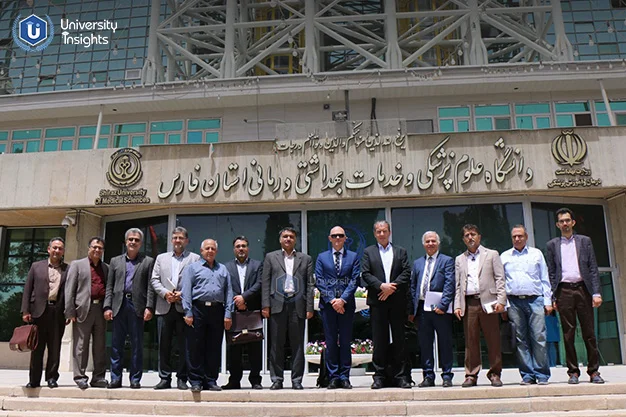
Study MBBS in Iran for Indian Students 2026-27
Tailored Programs for Indian Students to Study MBBS in Iran 2026
Iran’s medical universities have designed their MBBS programs to cater to the specific needs of international students, particularly from India. These programs are structured to align with the academic standards and medical curriculum recognized globally, ensuring that Indian students receive a high-quality education that is both comprehensive and compatible with medical standards worldwide.
- NEET Requirement: Indian students are required to pass the NEET exam to qualify for admission into Iranian medical universities. This ensures that the students have a strong foundational knowledge in the medical sciences before they begin their studies in Iran.
- Curriculum Alignment: The MBBS curriculum in Iran is designed to match the medical education standards in India, making it easier for students to continue their practice back home if they choose to do so.
Community and Support for Indian Nationals to Study MBBS in Iran 2026
Iran offers a welcoming and supportive environment for Indian students. The country’s cultural richness and hospitality make it an ideal destination for students seeking to study abroad.
- Cultural Adaptation Programs: Iranian universities often have cultural adaptation programs to help Indian students adjust to their new environment. These programs include language courses, cultural events, and social gatherings to foster a sense of community.
- Student Associations: There are various student associations and groups specifically for Indian nationals. These associations provide support, organize cultural festivals, and create a network of Indian students and professionals in Iran.
Recognized and Accredited Medical Degree
An MBBS degree from an Iranian university is recognized and respected worldwide, which opens numerous opportunities for Indian students.
- Global Recognition: The medical degree awarded by Iranian universities is accepted by major medical councils and organizations around the globe, including the MCI (Medical Council of India), PMDC (Pakistan Medical and Dental Council), and PLAB (Professional and Linguistic Assessments Board) in the UK.
- Eligibility for Licensure Exams: Graduates from Iranian medical universities are eligible to sit for licensure exams in various countries, making it easier for them to pursue medical careers internationally.
English Medium of Instruction to Study MBBS in Iran 2026
The medium of instruction for the MBBS program in Iran is English, which is advantageous for Indian students.
- Ease of Learning: Since English is widely spoken and understood by Indian students, the language of instruction being English helps them grasp complex medical concepts without the barrier of a foreign language.
- Comprehensive Resources: Study materials, textbooks, and lectures are all provided in English, ensuring that students have access to a wealth of resources in a language they are comfortable with.
Affordable Education and Living Costs while Studying MBBS in Iran 2026
The cost of pursuing an MBBS degree in Iran is considerably lower compared to many other countries.
- Reasonable Tuition Fees: Iranian universities offer high-quality medical education at a fraction of the cost compared to Western countries.
- Cost of Living: The overall cost of living in Iran is affordable, including accommodation, food, and other daily expenses, making it an economically viable option for Indian students.
State-of-the-Art Facilities and Infrastructure to Study MBBS in Iran 2026
Iranian medical universities are equipped with modern facilities that enhance the learning experience.
- Advanced Laboratories: The universities boast well-equipped laboratories that provide hands-on experience with the latest medical technology and equipment.
- Extensive Libraries: Students have access to vast libraries filled with medical journals, research papers, and books that support their academic and research endeavors.
- Campus Amenities: Large campus grounds include academic buildings, hostels, and recreational facilities, providing a conducive environment for studying and personal development.
Comprehensive Internships and Practical Experience to Study MBBS in Iran 2026
Practical experience is a crucial part of medical education, and Iranian universities excel in this aspect.
- Internship Opportunities: Students have the opportunity to intern at advanced medical facilities, gaining practical experience under the supervision of experienced professionals.
- Hands-on Training: The MBBS program includes extensive practical training in hospitals and clinics, ensuring that students are well-prepared for real-world medical scenarios.
Multicultural Learning Environment while you Study MBBS in Iran 2026
Studying in Iran exposes students to a diverse and multicultural environment, enhancing their educational experience.
- Diverse Student Body: The presence of international students from various countries fosters a multicultural learning environment where students can exchange knowledge and cultural experiences.
- Global Perspective: Learning in such a setting helps students develop a global perspective on healthcare and medical practices, which is invaluable in today’s interconnected world.
Highly Qualified Faculty for MBBS in Iran 2026
Iranian medical universities employ highly qualified and experienced faculty members.
- Expert Instructors: The faculty comprises professionals who are experts in their respective fields, bringing a wealth of knowledge and experience to the classroom.
- Mentorship and Guidance: Students benefit from the mentorship and guidance of these seasoned professionals, aiding their academic and professional growth.
In conclusion, pursuing an MBBS degree in Iran offers Indian students a unique combination of high-quality education, cultural immersion, affordability, and global recognition. With its robust support system, modern infrastructure, and emphasis on practical training, Iran is an excellent destination for aspiring medical professionals from India.
Want To Study in Iran?
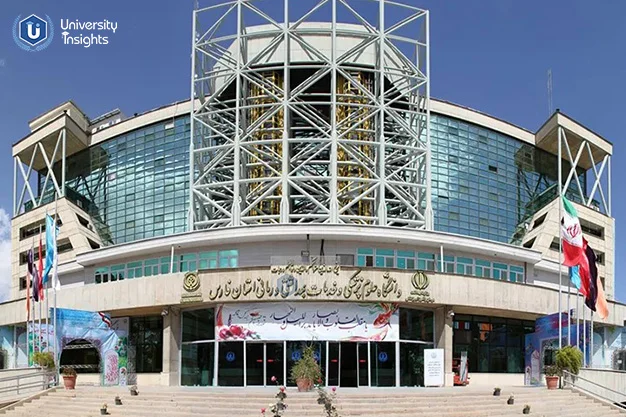
Admission Process for Studying MBBS in Iran 2026-27
Eligibility Criteria and Required Documents for Studying MBBS in Iran 2026-27
The admission process for pursuing an MBBS degree in Iran is well-structured and ensures that only eligible candidates are considered. Here is a detailed overview of the eligibility criteria and the necessary documents required for applying to medical universities in Iran.
Eligibility Criteria to Study MBBS in Iran 2026:
Age Requirement:
- Applicants must be at least 17 years old by December 31st of the admission year. This ensures that students are mature enough to handle the rigorous medical curriculum and responsibilities.
Academic Qualifications:
- Candidates must have completed their 12th grade with a minimum aggregate score of 50% in Physics, Chemistry, and Biology from a recognized board of education such as CBSE, ICSE, or any equivalent board.
Entrance Examination:
- Students must have qualified the NEET (UG) Entrance exam as per the latest notification by the Medical Council of India (MCI). The minimum qualifying marks for NEET 2024 are:
- General category: 720-162
- SC/ST/OBC categories: 161-127.
- Students must have qualified the NEET (UG) Entrance exam as per the latest notification by the Medical Council of India (MCI). The minimum qualifying marks for NEET 2024 are:
Required Documents to Study MBBS in Iran 2026:
To streamline the application process and avoid last-minute hassles, it is essential to prepare all necessary documents in advance. Here is a list of documents typically required for MBBS admission in Iran:
Academic Certificates:
- High School (10th grade) Marksheet
- Intermediate (12th grade) Marksheet
Entrance Exam Score:
- NEET Score Card
Identification Proof:
- A government-issued ID proof with accurate details.
English Proficiency:
- Certification of proficiency in English, as it is the medium of instruction in many Iranian universities.
Recommendation Letters:
- Letters of recommendation from teachers or academic mentors.
Motivation Letter:
- A personal statement or motivation letter explaining why you wish to pursue MBBS in Iran.
Resume/Curriculum Vitae:
- A detailed CV highlighting your academic achievements and any relevant experiences.
Visa and Passport:
- A valid student visa
- Photocopies of passport-sized photographs
- Current passport with at least six months validity
Financial Proof:
- Proof of sufficient funds to cover tuition fees and living expenses.
Additional documents may be required based on specific university requirements, so it is advisable to check with the university’s admission office.
Application Process and Deadlines to Study MBBS in Iran 2026
Applying for an MBBS program in Iran involves several steps, from filling out the application form to securing a student visa. Here is a comprehensive guide to the application process:
Step-by-Step Application Process to Study MBBS in Iran 2026:
Application Form:
- Complete the application form with accurate personal and educational information. Ensure that all details are correctly filled out to avoid any discrepancies. Application forms are typically available on the university’s official website from January.
Document Submission:
- Submit scanned copies of your academic certificates, NEET score card, identification proof, and other required documents to the university of your choice. The submission period usually starts in February and continues until May.
Application Review:
- The university will review your application and documents. This process may take a few weeks, so it is essential to apply well in advance. Application reviews generally occur from March to June.
Admission Report:
- Once the university completes its assessment, you will receive an admission report indicating whether you have been accepted. Admission results are typically announced in June.
Tuition Fee Payment:
- Upon receiving the admission report, you need to pay the required tuition fees to confirm your seat in the program. The deadline for tuition fee payment is usually by the end of June.
Visa Application:
- After confirming your admission, you can start the immigration process. Apply for a student visa by submitting the necessary documents to the Iranian consulate or embassy. It is advisable to start the visa application process immediately after receiving the admission confirmation, as it can take several weeks.
Travel Arrangements:
- Once your visa is approved, you can make travel arrangements to Iran. Ensure that you have all your documents in order before departing. Plan to arrive in Iran at least a week before the commencement of classes, which typically start in September.
Deadlines to Study MBBS in Iran 2026:
Each university in Iran may have different application deadlines. However, here are the general deadlines you should be aware of:
- January: Application forms become available.
- February to May: Submission of application forms and documents.
- March to June: Application review period.
- June: Admission results announced.
- End of June: Deadline for tuition fee payment.
- July to August: Visa application and approval.
- September: Classes commence.
The process of applying for an MBBS program in Iran is systematic and requires careful attention to detail. Meeting the eligibility criteria and preparing all necessary documents in advance will ensure a smooth application process. By following the outlined steps and adhering to the deadlines, prospective medical students can embark on their journey to becoming doctors in one of the reputable medical universities in Iran.
Want To Study in Iran?
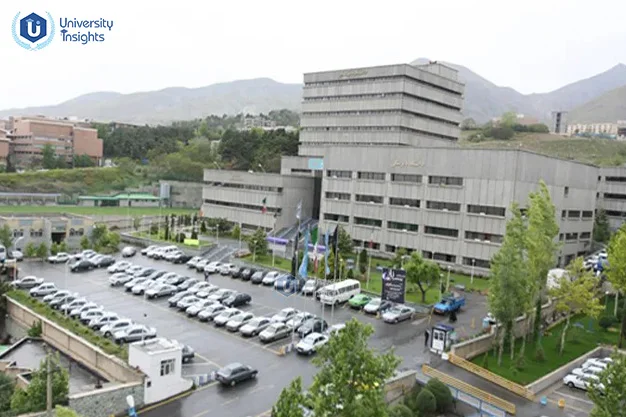
Understanding the Fee Structure and Costs to Study MBBS in Iran 2026-27
Pursuing an MBBS degree in Iran is an affordable and high-quality option for international students. Here is a detailed overview of the tuition fees and additional costs associated with studying MBBS in Iran.
Tuition Fees for MBBS in Iranian Medical Universities to Study MBBS in Iran 2026
The tuition fees for MBBS programs at various medical universities in Iran are structured to be affordable while providing high-quality education. Below is the fee structure for the academic year 2025-26:
| Name of College | Tuition Fee Per Year (USD) |
|---|---|
| Islamic Azad University | $ 3500 |
| Tehran University of Medical Sciences | $ 6000 |
| Shiraz University of Medical Sciences | $ 6000 |
| Shahid Beheshti University of Medical Sciences | $ 4000 |
| Isfahan University of Medical Sciences | $ 5000 |
| Iran University of Medical Sciences | $ 5000 |
| Mashhad University of Medical Sciences | $ 5000 |
These fees are relatively lower compared to many other countries, making Iran an attractive destination for medical studies.
Additional Costs and Financial Planning to Study MBBS in Iran 2026
In addition to tuition fees, students should consider other costs associated with studying and living in Iran:
Accommodation:
- University hostels are available and are equipped with necessary amenities. The cost for accommodation ranges from USD 1000 to USD 3000 per year, depending on the university and type of accommodation.
Living Expenses:
- The cost of living in Iran is generally low. On average, students should budget around USD 100 per month for living expenses, which include food, transportation, and other daily necessities. This translates to approximately USD 1200 per year.
Transportation:
- Public transportation in Iran is affordable. A one-way ticket on local transit costs about USD 2, while a monthly pass ranges from USD 10 to USD 30. Students also receive discounts on train and bus tickets.
Books and Supplies:
- Students should budget approximately USD 100 to USD 300 per year for books and supplies, although many resources are available in the university libraries.
Health Insurance:
- Health insurance is mandatory and costs around USD 150 to USD 400 per year.
Miscellaneous Costs:
- This includes personal expenses, entertainment, and other activities, averaging around USD 300 to USD 600 per year.
Summary of Additional Costs to Study MBBS in Iran 2026:
| Expense Type | Estimated Annual Cost (USD) |
|---|---|
| Accommodation | 1000 – 3000 |
| Living Expenses | 1200 |
| Transportation | 120 – 360 |
| Books and Supplies | 100 – 300 |
| Health Insurance | 150 – 400 |
| Miscellaneous | 300 – 600 |
| Total Estimated Cost | 2870 – 6860 |
Financial Planning to Study MBBS in Iran 2026:
It’s essential for students to plan their finances carefully. Here are some tips:
- Scholarships: Many universities in Iran offer scholarships to merit students, which can significantly reduce the financial burden. Check with the university’s international office for available scholarships and financial aid options.
- Part-time Jobs: While studying in Iran, international students can explore part-time job opportunities within the campus to support their living expenses.
- Budgeting: Create a monthly budget to manage expenses effectively and avoid unnecessary spending.
Understanding the fee structure and associated costs of studying MBBS in Iran is crucial for effective financial planning. By considering tuition fees, accommodation, living expenses, and other costs, students can ensure a smooth and financially stable study experience in Iran.
Want To Study in Iran?

Fee Structure to Study MBBS in Iran 2026-27
Detailed Breakdown of Fees to Study MBBS in Iran 2026
Studying MBBS in Iran offers an affordable yet high-quality medical education. Below is the detailed fee structure for some of the top medical universities in Iran for the academic year 2025-26:
| Name of College | Tuition Fee Per Year (USD) |
|---|---|
| Islamic Azad University | 6000 |
| Tehran University of Medical Sciences | 7500 |
| Shiraz University of Medical Sciences | 5000 |
| Shahid Beheshti University of Medical Sciences | 5000 |
| Isfahan University of Medical Sciences | 5000 |
| Iran University of Medical Sciences | 5000 |
| Mashhad University of Medical Sciences | 5000 |
These fees are indicative and may vary slightly depending on the university and changes in currency rates.
Hidden Costs and Budget Planning to Study MBBS in Iran 2026
Accommodation: University hostels cost between USD 1000 to USD 3000 per year, depending on the type of accommodation and university location.
Food and Living Expenses: Students should budget approximately USD 100 per month for living expenses, which include groceries, dining out, and other daily necessities. This totals around USD 1200 per year. Meals in mid-range restaurants cost between USD 15 to USD 20.
Transportation: Public transportation in Iran is affordable. A one-way local transit ticket costs about USD 2, while a monthly pass ranges from USD 10 to USD 30. Students also receive a 30% discount on public transportation.
Books and Supplies: Budget around USD 100 to USD 300 per year for books and supplies. University libraries provide many resources, but some materials may need to be purchased.
Health Insurance: Health insurance is mandatory and costs between USD 150 to USD 400 per year.
Miscellaneous Costs: Miscellaneous expenses, including personal items, entertainment, and other activities, can range from USD 300 to USD 600 per year.
Summary of Additional Costs to Study MBBS in Iran 2026:
| Expense Type | Estimated Annual Cost (USD) |
|---|---|
| Accommodation | 1000 – 3000 |
| Food and Living Expenses | 1200 |
| Transportation | 120 – 360 |
| Books and Supplies | 100 – 300 |
| Health Insurance | 150 – 400 |
| Miscellaneous | 300 – 600 |
| Total Estimated Cost | 2870 – 6860 |
Financial Planning. to Study MBBS in Iran 2026:
- Scholarships: Some universities offer scholarships to international students based on academic performance. For instance, Kerman University of Medical Sciences offers scholarships ranging from 60% to 70% tuition fee waivers for students with high academic scores.
- Part-time Jobs: International students can explore part-time job opportunities within the campus to help support their living expenses.
- Budgeting: Creating a monthly budget helps in managing expenses effectively and avoiding unnecessary spending.
Understanding the fee structure and associated costs of studying MBBS in Iran is crucial for effective financial planning. By considering tuition fees, accommodation, living expenses, and other costs, students can ensure a smooth and financially stable study experience in Iran.
Want To Study in Iran?
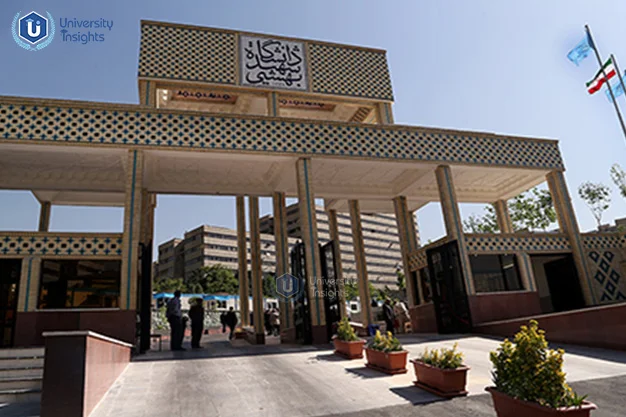
Top Medical Universities to Study MBBS in Iran 2026-27
12Iran is home to several prestigious medical universities that offer high-quality education and training. Here are some of the top medical colleges for MBBS in Iran along with their latest rankings and a spotlight on one of the most renowned institutions, the Tehran University of Medical Sciences.
Best Medical Colleges for Studying MBBS in Iran 2026
| S.No | University Name | Tuition Fees/Year (USD) | Tuition Fees/Year (INR) | Hostel Fees/Year (USD) | Hostel Fees/Year (INR) |
|---|---|---|---|---|---|
| 1 | Islamic Azad University Tabriz Branch | 15,00 USD | 1,27,500 INR | 12,00 USD | 1,02,000 INR |
| 2 | Islamic Azad University of Medical Science | 3,500 USD | 2,97,500 INR | 12,00 USD | 1,02,000 INR |
| 3 | Golestan University | 3,300 USD | 2,80,000 INR | 300 USD | 25,500 INR |
| 4 | Urmia University of Medical Science | 3,000 USD | 2,55,000 INR | 1200 USD | 1,02,000 INR |
| 5 | Shiraz University of Medical Science | 6,000 USD | 5,10,400 INR | 0 – USD | 0 – INR |
| 6 | Hamedan University of Medical Science | 32,000 USD | 2,72,000 INR | 600 USD | 51,000 INR |
| 7 | Ahvaz Jundishapur University of Medical Science | 3,900 USD | 319,800 INR | 500 USD | 41,000 INR |
| 8 | Seman University of Medical Science | 3,600 USD | 295,200 INR | 400 USD | 32,800 INR |
| 9 | Iran University of Medical Science | 3,300 USD | 2,80,500 INR | 1500 USD | 1,27,500 INR |
| 10 | Zanjan University of Medical Sciences | 3,400 USD | 278,800 INR | 400 USD | 32,800 INR |
| 11 | Tabriz University of Medical Sciences | 3,800 USD | 311,600 INR | 450 USD | 36,900 INR |
| 12 | Kerman University of Medical Sciences Faculty of Medicine | 1500 USD | 1,27,500 INR | 1000 USD | 85,000 INR |
| 13 | Zahedan University of Medical Sciences | 3,600 USD | 295,200 INR | 400 USD | 32,800 INR |
| 14 | Qom University of Medical Sciences | 3,500 USD | 287,000 INR | 400 USD | 32,800 INR |
| 15 | Mazandaran University of Medical Sciences | 4,200 USD | 344,400 INR | 600 USD | 49,200 INR |
| 16 | Kashan University of Medical Sciences and Health Services | 3,800 USD | 311,600 INR | 450 USD | 36,900 INR |
| 17 | Alborz University of Medical Sciences School of Medicine | 4,000 USD | 328,000 INR | 600 USD | 49,200 INR |
| 18 | Mashhad University of Medical Sciences | 4,500 USD | 369,000 INR | 700 USD | 57,400 INR |
| 19 | Ilam University of Medical Sciences | 3,500 USD | 287,000 INR | 400 USD | 32,800 INR |
| 20 | Hormozgan University of Medical Sciences | 2,600 USD | 2,21,000 INR | 500 USD | 42,500 INR |
| 21 | Tehran University of Medical Sciences | 6,000 USD | 5,10,000 INR | 1200 USD | 1,02,000 INR |
| 22 | Shahid Beheshti University of Medical Sciences | 4,000 USD | 3,30,000 INR | 1500 USD | 1,27,500 INR |
| 23 | Babol University of Medical Sciences | 3,700 USD | 303,400 INR | 450 USD | 36,900 INR |
| 24 | Kermanshah University of Medical Sciences School of Medicine | 3,600 USD | 295,200 INR | 400 USD | 32,800 INR |
| 25 | Isfahan University | 4,200 USD | 344,400 INR | 600 USD | 49,200 INR |
Programs and Courses: TUMS offers a wide range of undergraduate and postgraduate programs in various medical and health sciences fields. The university is known for its comprehensive MBBS program, which includes extensive clinical training and research opportunities.
Research and Facilities: TUMS is equipped with state-of-the-art research facilities and laboratories. The university actively engages in advanced medical research and has collaborations with numerous international research institutions.
Global Recognition: TUMS is globally recognized and accredited by major medical councils, including the World Health Organization (WHO) and the Medical Council of India (MCI). It ranks highly both regionally and globally for its medical programs.
Campus and Student Life: The university provides a vibrant campus life with numerous extracurricular activities and student organizations. The facilities include modern classrooms, libraries, and accommodation options for international students.
Admission Requirements:
- Age: Minimum of 17 years old by December 31st of the admission year.
- Qualifications: Completion of 12th grade with at least 60% in Physics, Chemistry, and Biology for general category students; 50% for reserved categories.
- Entrance Exam: NEET qualification with a score of at least 164 for general category students and 129 for SC/ST/OBC candidates.
- Language Proficiency: Proficiency in English is required; some courses may require knowledge of Persian from the third year onward.
Shahid Beheshti University of Medical Sciences
Programs and Courses: This university offers a variety of undergraduate and postgraduate programs in medical and health sciences, with a strong emphasis on clinical training and research.
Research and Facilities: Shahid Beheshti University is renowned for its well-equipped laboratories and advanced research facilities. The university is involved in numerous research projects and has collaborations with international institutions.
Global Recognition: The university is accredited by the WHO and the MCI, ensuring its degrees are recognized globally.
Campus and Student Life: Students at Shahid Beheshti enjoy a dynamic campus life with access to modern amenities, including libraries, sports facilities, and student organizations.
Admission Requirements:
- Age: Minimum of 17 years old by December 31st of the admission year.
- Qualifications: Completion of 12th grade with at least 60% in Physics, Chemistry, and Biology for general category students; 50% for reserved categories.
- Entrance Exam: NEET qualification with a score of at least 164 for general category students and 129 for SC/ST/OBC candidates.
- Language Proficiency: Proficiency in English is required.
Iran University of Medical Sciences
Programs and Courses: Iran University of Medical Sciences offers a range of medical and health sciences programs at both undergraduate and postgraduate levels. The MBBS program includes rigorous clinical training and research opportunities.
Research and Facilities: The university boasts state-of-the-art research facilities and actively participates in cutting-edge medical research, collaborating with international research bodies.
Global Recognition: Accredited by the WHO and MCI, the university’s programs are recognized worldwide, enhancing the career prospects of its graduates.
Campus and Student Life: The campus offers a vibrant student life with various extracurricular activities, student clubs, and comprehensive support services.
Admission Requirements:
- Age: Minimum of 17 years old by December 31st of the admission year.
- Qualifications: Completion of 12th grade with at least 60% in Physics, Chemistry, and Biology for general category students; 50% for reserved categories.
- Entrance Exam: NEET qualification with a score of at least 164 for general category students and 129 for SC/ST/OBC candidates.
- Language Proficiency: Proficiency in English is required.
Shiraz University of Medical Sciences
Programs and Courses: Shiraz University offers a comprehensive MBBS program along with various other medical and health sciences courses at undergraduate and postgraduate levels.
Research and Facilities: The university is known for its strong focus on research, supported by well-equipped laboratories and a robust research infrastructure.
Global Recognition: Shiraz University is accredited by major medical councils including WHO and MCI, making its degrees internationally recognized.
Campus and Student Life: The university provides a supportive and engaging environment for students with access to modern facilities and a variety of student activities.
Admission Requirements:
- Age: Minimum of 17 years old by December 31st of the admission year.
- Qualifications: Completion of 12th grade with at least 60% in Physics, Chemistry, and Biology for general category students; 50% for reserved categories.
- Entrance Exam: NEET qualification with a score of at least 164 for general category students and 129 for SC/ST/OBC candidates.
- Language Proficiency: Proficiency in English is required.
Mashhad University of Medical Sciences
Programs and Courses: Offers a wide range of medical and health sciences programs, including a comprehensive MBBS course with a strong clinical and research component.
Research and Facilities: The university has advanced research facilities and is involved in numerous high-impact medical research projects.
Global Recognition: Accredited by WHO and MCI, Mashhad University’s degrees are recognized globally.
Campus and Student Life: Provides a well-rounded student experience with various extracurricular activities and support services.
Admission Requirements:
- Age: Minimum of 17 years old by December 31st of the admission year.
- Qualifications: Completion of 12th grade with at least 60% in Physics, Chemistry, and Biology for general category students; 50% for reserved categories.
- Entrance Exam: NEET qualification with a score of at least 164 for general category students and 129 for SC/ST/OBC candidates.
- Language Proficiency: Proficiency in English is required.
Tabriz University of Medical Sciences
Programs and Courses: Offers diverse medical programs, including MBBS, with a focus on integrating clinical practice and research.
Research and Facilities: Known for its innovative research programs, supported by state-of-the-art facilities and collaborations with international research entities.
Global Recognition: Accredited by international medical councils such as WHO and MCI.
Campus and Student Life: Provides a vibrant and inclusive campus atmosphere with numerous student activities and modern amenities.
Admission Requirements:
- Age: Minimum of 17 years old by December 31st of the admission year.
- Qualifications: Completion of 12th grade with at least 60% in Physics, Chemistry, and Biology for general category students; 50% for reserved categories.
- Entrance Exam: NEET qualification with a score of at least 164 for general category students and 129 for SC/ST/OBC candidates.
- Language Proficiency: Proficiency in English is required.
Isfahan University of Medical Sciences
Programs and Courses: Offers comprehensive programs in medical and health sciences, with a strong emphasis on clinical training and research.
Research and Facilities: Houses advanced laboratories and research centers, actively engaging in cutting-edge medical research.
Global Recognition: Accredited by WHO and other major medical bodies, ensuring global recognition of its degrees.
Campus and Student Life: Offers a dynamic student environment with various support services and extracurricular activities.
Admission Requirements:
- Age: Minimum of 17 years old by December 31st of the admission year.
- Qualifications: Completion of 12th grade with at least 60% in Physics, Chemistry, and Biology for general category students; 50% for reserved categories.
- Entrance Exam: NEET qualification with a score of at least 164 for general category students and 129 for SC/ST/OBC candidates.
- Language Proficiency: Proficiency in English is required.
Kerman University of Medical Sciences
Programs and Courses: Offers various medical programs with a focus on integrating clinical practice and research.
Research and Facilities: Provides modern research facilities and a strong academic support system for students.
Global Recognition: Accredited by international medical councils, ensuring the global recognition of its degrees.
Campus and Student Life: Known for its supportive student environment and active campus life, with numerous extracurricular activities.
Admission Requirements:
- Age: Minimum of 17 years old by December 31st of the admission year.
- Qualifications: Completion of 12th grade with at least 60% in Physics, Chemistry, and Biology for general category students; 50% for reserved categories.
- Entrance Exam: NEET qualification with a score of at least 164 for general category students and 129 for SC/ST/OBC candidates.
- Language Proficiency: Proficiency in English is required
These universities represent some of the best options for studying MBBS in Iran, offering high-quality education, extensive research opportunities, and a supportive student environment. For more detailed information on the application process, fees, and specific course details, prospective students are encouraged to visit the official websites of these universities.
Want To Study in Iran?
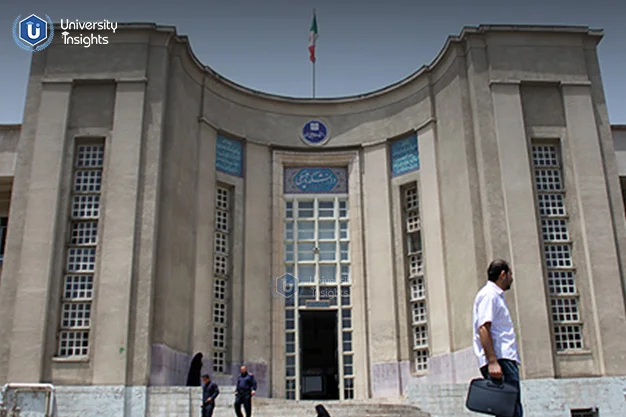
Advantages of Studying MBBS in Iran 2026-27
Modern Facilities and Innovative Teaching Methods to Study MBBS in Iran 2026
Studying MBBS in Iran offers several advantages, particularly regarding the modern facilities and innovative teaching methods employed by the universities. Medical universities in Iran are equipped with state-of-the-art laboratories and research centers, ensuring that students have access to the latest technology and equipment. This enhances their learning experience and prepares them for practical challenges in the medical field.
Modern Facilities to Study MBBS in Iran 2026:
- Advanced Laboratories: Universities like Tehran University of Medical Sciences and Shiraz University of Medical Sciences are known for their high-tech laboratories, which are crucial for conducting cutting-edge research and practical training.
- Digital Learning Tools: Many universities incorporate digital tools and e-learning platforms to supplement traditional teaching methods, making it easier for students to access learning materials and engage in interactive sessions.
- Simulation Centers: Several Iranian medical universities have established simulation centers where students can practice surgical and clinical skills in a controlled, risk-free environment.
Innovative Teaching Methods to Study MBBS in Iran:
- Problem-Based Learning (PBL): This approach encourages students to learn through the structured exploration of complex, real-world problems, fostering critical thinking and problem-solving skills.
- Integrated Curriculum: The medical curriculum in Iran often integrates basic sciences with clinical practice from the early years of the MBBS program, providing a holistic understanding of medical concepts.
- Research Opportunities: Students are encouraged to participate in research projects, contributing to the advancement of medical knowledge and gaining valuable experience.
Strong Focus on Clinical Exposure to Study MBBS in Iran 2026
Iranian medical universities emphasize extensive clinical exposure, which is a critical component of medical education. This focus ensures that students are not only theoretically proficient but also practically skilled by the time they graduate.
Clinical Exposure to. Study MBBS in Iran 2026:
- Early Clinical Training: Students begin their clinical training early in their education, often from the second or third year of the MBBS program. This early exposure helps them integrate theoretical knowledge with practical skills.
- Affiliated Hospitals: Universities like Mashhad University of Medical Sciences and Isfahan University of Medical Sciences have strong affiliations with top hospitals, providing students with ample opportunities for hands-on experience in real healthcare settings.
- Internship Programs: The final years of the MBBS program are dedicated to internships, where students work in various departments of hospitals under the supervision of experienced doctors. This practical training is crucial for building confidence and competence in medical practice.
Advantages of Clinical Exposure to Study MBBS in Iran 2026:
- Real-World Experience: By working with patients, students gain real-world experience in diagnosing and treating illnesses, managing patient care, and performing medical procedures.
- Skill Development: Extensive clinical exposure helps in honing essential skills such as patient communication, clinical reasoning, and decision-making.
- Career Readiness: Graduates from Iranian medical universities are well-prepared for their medical careers, having already spent significant time in clinical environments.
These advantages make Iran an attractive destination for students pursuing an MBBS degree, providing them with a well-rounded education that balances theoretical knowledge with practical skills.
Want To Study in Iran?
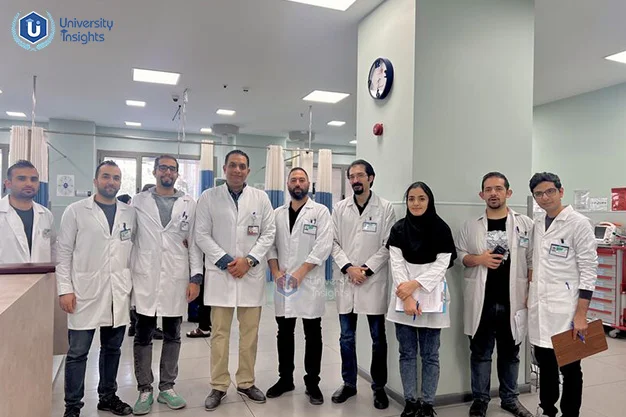
Course Details and Curriculum of Studying MBBS in Iran 2026-27
MBBS Course Structure and Duration | Study MBBS in Iran 2026
The MBBS program in Iran typically spans 5 to 6 years, depending on the university. The structure is designed to provide a comprehensive medical education that balances theoretical knowledge with practical clinical experience. The course is divided into several phases:
Pre-Clinical Phase (Years 1-2):
- Focus on basic medical sciences such as Anatomy, Physiology, Biochemistry, and Histology.
- Introduction to medical terminology and foundational concepts in medicine and surgery.
Para-Clinical Phase (Years 3-4):
- Subjects include Pathology, Microbiology, Pharmacology, Forensic Medicine, and Community Medicine.
- Clinical postings in wards and OPD (Outpatient Department) begin, providing early exposure to patient care.
Clinical Phase (Years 5-6):
- Intensive clinical training in various specialties including Medicine, Surgery, Pediatrics, Obstetrics and Gynecology, Psychiatry, and more.
- Final year typically involves a one-year compulsory rotating internship, allowing students to apply their knowledge in real-world settings under supervision.
Syllabus and Key Subjects Covered to Study MBBS in Iran 2026
The MBBS syllabus in Iran is structured to cover a wide range of subjects essential for a thorough medical education. The syllabus is divided into core subjects and elective specializations.
Core Subjects:
- Pre-Clinical: Anatomy, Physiology, Biochemistry, Histology.
- Para-Clinical: Pathology, Microbiology, Pharmacology, Forensic Medicine, Community Medicine.
- Clinical: Medicine, Surgery, Pediatrics, Obstetrics and Gynecology, Psychiatry, Dermatology, Ophthalmology, ENT, Orthopedics, Anesthesiology, Radiology.
Elective Subjects:
- Dermatology and Sexually Transmitted Diseases
- Psychiatry
- Tuberculosis and Respiratory Diseases
- Anesthesia
- Radiology
- Physical Medicine and Rehabilitation
- Forensic Medicine and Toxicology
Internship Structure: The internship is a crucial part of the MBBS curriculum, providing hands-on experience across various medical disciplines:
- Medicine: 1.5 months
- Surgery: 1.5 months
- Pediatrics: 1 month
- Obstetrics and Gynecology: 1 month
- Casualty: 1 month
- Anesthesiology: 15 days
- Ophthalmology: 15 days
- Elective Specialties: 2 months
During the internship, students rotate through different departments, gaining practical experience and developing essential clinical skills. This exposure is vital for building confidence and competence in medical practice.
Want To Study in Iran?
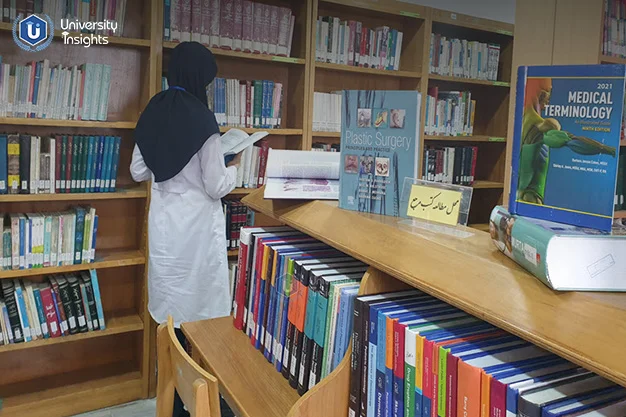
Studying MBBS in Iran Syllabus
Overview of the Curriculum to Study MBBS in Iran 2026
The MBBS curriculum in Iran is designed to provide a comprehensive medical education that balances theoretical knowledge with practical clinical experience. The program typically spans six years, divided into several phases, each focusing on different aspects of medical education. The structure aims to equip students with the necessary skills and knowledge to excel in their medical careers.
Course Duration and Structure to Study MBBS in Iran 2026:
| Phase | Duration | Key Components |
|---|---|---|
| Pre-Clinical Phase | 2 years | Basic medical sciences, Anatomy, Physiology, Biochemistry |
| Para-Clinical Phase | 2 years | Pathology, Microbiology, Pharmacology, Forensic Medicine, Community Medicine |
| Clinical Phase | 2 years | Medicine, Surgery, Pediatrics, Obstetrics and Gynecology, Psychiatry, and more |
| Internship | 1 year | Rotational postings in various departments, hands-on clinical experience |
Pre-Clinical Phase (Years 1-2):
- Anatomy: Study of the structure of the human body.
- Physiology: Functions and mechanisms in a living system.
- Biochemistry: Chemical processes within and related to living organisms.
- Histology: Study of tissues at the microscopic level.
Para-Clinical Phase (Years 3-4):
- Pathology: Study of diseases and their effects on the body.
- Microbiology: Study of microorganisms and their effects on humans.
- Pharmacology: Study of drugs and their uses.
- Forensic Medicine: Application of medical knowledge to legal issues.
- Community Medicine: Health and disease prevention at the community level.
Clinical Phase (Years 5-6):
- Medicine: Diagnosis and treatment of diseases.
- Surgery: Surgical procedures and patient management.
- Pediatrics: Medical care of infants, children, and adolescents.
- Obstetrics and Gynecology: Care related to childbirth and female reproductive systems.
- Psychiatry: Study and treatment of mental illnesses.
- Dermatology: Skin diseases and treatments.
- Ophthalmology: Eye and vision care.
- ENT (Otorhinolaryngology): Ear, nose, and throat care.
- Orthopedics: Bone and musculoskeletal system care.
- Anesthesiology: Anesthesia and pain management.
- Radiology: Imaging techniques for diagnosis and treatment.
Subjects and Specializations to Study MBBS in Iran 2026
The MBBS syllabus in Iran covers a wide range of subjects essential for a thorough medical education. These subjects are divided into core subjects and elective specializations, ensuring that students receive a well-rounded education.
Core Subjects to Study MBBS in Iran 2026:
| Subject | Description |
|---|---|
| Anatomy | Study of human body structure |
| Physiology | Functions and mechanisms in living systems |
| Biochemistry | Chemical processes within living organisms |
| Histology | Study of tissues |
| Pathology | Study of diseases |
| Microbiology | Study of microorganisms |
| Pharmacology | Study of drugs and their effects |
| Forensic Medicine | Medical knowledge applied to legal issues |
| Community Medicine | Public health and disease prevention |
| Medicine | Diagnosis and treatment of diseases |
| Surgery | Surgical procedures and patient management |
| Pediatrics | Medical care for children |
| Obstetrics and Gynecology | Reproductive health and childbirth |
| Psychiatry | Mental health and disorders |
| Dermatology | Skin diseases and treatments |
| Ophthalmology | Eye and vision care |
| ENT (Otorhinolaryngology) | Ear, nose, and throat care |
| Orthopedics | Bone and musculoskeletal system care |
| Anesthesiology | Anesthesia and pain management |
| Radiology | Imaging techniques for diagnosis and treatment |
Elective Subjects to Study MBBS in Iran 2026:
- Dermatology and Sexually Transmitted Diseases
- Psychiatry
- Tuberculosis and Respiratory Diseases
- Anesthesia
- Radiology
- Physical Medicine and Rehabilitation
- Forensic Medicine and Toxicology
Specializations to Study MBBS in Iran 2026:
- General Medicine: Comprehensive medical care.
- General Surgery: Surgical treatments and procedures.
- Pediatrics: Specialized care for children.
- Obstetrics and Gynecology: Reproductive health.
- Dermatology: Skin-related medical issues.
- Orthopedics: Musculoskeletal system care.
- ENT: Ear, nose, and throat specialization.
- Psychiatry: Mental health specialization.
- Anesthesiology: Focus on anesthesia and pain management.
- Plastic Surgery: Reconstructive surgical procedures.
- Neurosurgery: Surgical treatment of nervous system disorders.
- Cardio-Thoracic Surgery: Heart and chest surgery.
- Pediatric Surgery: Surgical care for children.
- Gastroenterology: Digestive system care.
- Endocrinology: Hormone-related diseases.
- Clinical Hematology: Blood disorders.
- Nephrology: Kidney care.
- Cardiology: Heart care.
- Immunology: Immune system care.
Internship Structure to Study MBBS in Iran 2026:
| Specialty | Duration |
|---|---|
| Medicine | 1.5 months |
| Surgery | 1.5 months |
| Rural Posting | 3 months |
| Pediatrics | 1 month |
| Obstetrics and Gynecology | 1 month |
| Casualty | 1 month |
| Anesthesiology | 15 days |
| Ophthalmology | 15 days |
| Elective Specialties | 2 months |
The internship is a critical component of the MBBS program, providing students with hands-on experience across various medical disciplines. This practical training is essential for developing clinical skills and preparing students for their medical careers.
By covering a comprehensive range of subjects and providing extensive clinical training, the MBBS curriculum in Iran ensures that students are well-prepared for their future roles as medical professionals. This structured approach helps in building a strong foundation in medical knowledge and skills, making it an attractive option for students considering an MBBS abroad.
Want To Study in Iran?
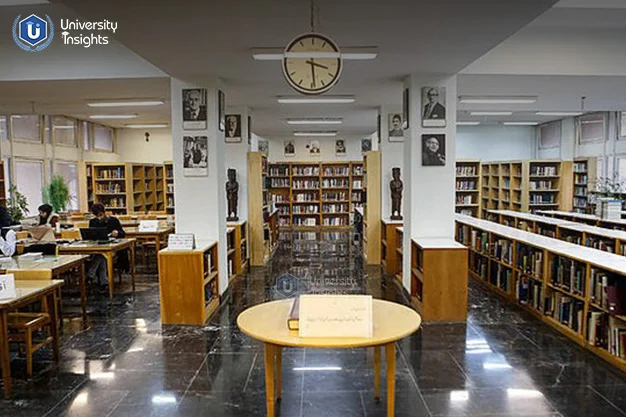
Opportunities and Career Prospects After Studying MBBS in Iran 2026-27
Career Paths and Job Opportunities Post-MBBS in Iran 2026
After completing an MBBS in Iran, graduates have a plethora of career paths and job opportunities available to them. Iranian medical education is recognized globally, enabling graduates to practice medicine in various countries.
Career Paths:
Clinical Practice:
- General Practitioner (GP): Many graduates start their careers as general practitioners, providing primary healthcare services. GPs in Iran can earn between $6,000 and $12,000 per year, depending on experience.
- Specialist Doctor: Further specialization in fields such as cardiology, neurology, pediatrics, etc., allows doctors to focus on specific medical areas, potentially increasing their earning potential and job satisfaction.
Healthcare Administration:
- Hospital Administration: With additional qualifications, MBBS graduates can take on roles in hospital administration, managing healthcare facilities and improving healthcare delivery systems.
- Healthcare Policy Making: Involvement in shaping healthcare policies and systems at various levels of government and private institutions.
Research and Education:
- Medical Research: Graduates can join research institutes or pursue advanced degrees to contribute to medical science and education.
- Academic Positions: Teaching positions in medical universities, mentoring the next generation of doctors.
Private Practice:
- Setting up Clinics: Many graduates choose to set up their own clinics, offering specialized medical services and enjoying professional autonomy.
International Opportunities:
- Global Practice: The comprehensive training received in Iranian universities prepares graduates for medical careers worldwide. Countries with high demand for medical professionals, especially underdeveloped areas, often seek Iranian-trained doctors.
Licensing and Further Studies
Licensing Requirements:
Graduates from Iranian medical universities need to pass licensing exams to practice medicine in various countries. Here are some key requirements for different regions:
Iran:
- After completing the MBBS program, graduates must pass the national licensing exam to practice medicine.
India:
- Indian students returning to India must clear the Foreign Medical Graduates Examination (FMGE) or the National Exit Test (NEXT) to practice medicine.
United States:
- Graduates need to pass the United States Medical Licensing Examination (USMLE) to practice in the U.S.
United Kingdom:
- Graduates must pass the Professional and Linguistic Assessments Board (PLAB) test to practice in the UK.
Further Studies:
Many MBBS graduates choose to pursue further studies to specialize in specific medical fields. Here are some popular postgraduate options:
Master’s Programs:
- MD (Doctor of Medicine): Specialization in fields like internal medicine, pediatrics, cardiology, etc.
- MS (Master of Surgery): Specialization in surgical fields such as general surgery, orthopedics, neurosurgery, etc.
Fellowships:
- Specialized training programs that provide advanced clinical training in specific areas of medicine.
PhD Programs:
- Research-focused programs for those interested in academic and research careers.
Completing an MBBS in Iran opens up numerous career opportunities in clinical practice, healthcare administration, research, and academia. With the global recognition of Iranian medical degrees, graduates can pursue medical careers in various countries, enhancing their professional prospects and contributing to the global healthcare system.
Want To Study in Iran?
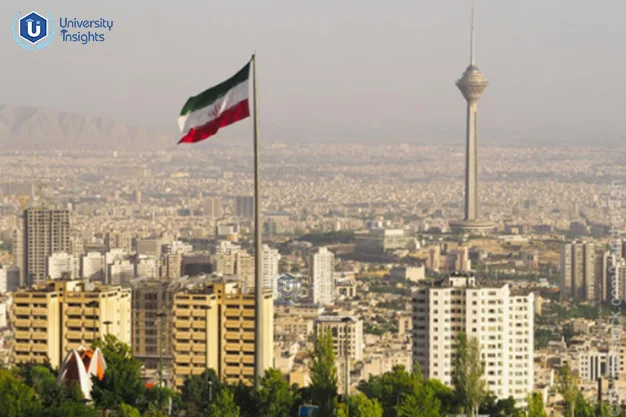
Studying MBBS in Iran vs MBBS in India 2026-27
Curriculum Differences
When comparing the MBBS curriculum in Iran and India, several key differences stand out in terms of structure, duration, and teaching methodologies.
| Aspect | MBBS in Iran | MBBS in India |
|---|---|---|
| Duration | 6 years including internship | 5.5 years including internship |
| Structure | Divided into Pre-Clinical, Para-Clinical, and Clinical phases | Divided into Pre-Clinical, Para-Clinical, and Clinical phases |
| Pre-Clinical Phase | Focus on Anatomy, Physiology, Biochemistry | Focus on Anatomy, Physiology, Biochemistry |
| Para-Clinical Phase | Subjects include Pathology, Microbiology, Pharmacology, Forensic Medicine, Community Medicine | Subjects include Pathology, Microbiology, Pharmacology, Forensic Medicine, Community Medicine |
| Clinical Phase | Includes Medicine, Surgery, Pediatrics, Obstetrics & Gynecology, Psychiatry, and more | Includes Medicine, Surgery, Pediatrics, Obstetrics & Gynecology, Psychiatry, and more |
| Teaching Methods | Emphasis on Problem-Based Learning and early clinical exposure | Traditional lecture-based with increasing focus on practical training from third year onwards |
| Research Opportunities | Strong focus on research with early student involvement | Encouraged but less integrated into the curriculum |
In Iran, medical universities like Tehran University of Medical Sciences employ innovative teaching methods such as Problem-Based Learning (PBL) and provide substantial clinical exposure early in the program. Conversely, Indian medical education traditionally emphasizes a lecture-based approach with clinical exposure intensifying in the later years.
Post-Graduation Opportunities and Recognition
| Aspect | MBBS in Iran | MBBS in India |
|---|---|---|
| Licensing Requirements | Must pass the national licensing exam in Iran; NEET for practice in India | Must pass the NEET for entry; FMGE or NEXT for practice abroad |
| Global Recognition | Recognized by WHO, MCI; allows for practice in multiple countries | Recognized globally; allows for practice after respective country exams |
| Further Studies | Opportunities for MD, MS, PhD in various specializations | Opportunities for MD, MS, DNB, and other postgraduate courses |
| Research Opportunities | Extensive research opportunities available | Growing emphasis on research in top institutions |
| Career Paths | Clinical practice, Research, Healthcare Administration, Global Opportunities | Clinical practice, Research, Healthcare Administration, Government roles |
| Popular Countries for Further Studies | USA, UK, Germany, Canada | USA, UK, Australia, Canada |
After completing an MBBS in Iran, graduates can pursue further studies or careers both within the country and internationally. Iranian medical degrees are recognized by major medical councils such as the WHO and the MCI, enabling graduates to practice in various countries after fulfilling local licensing requirements. Many graduates opt for further specialization through MD or MS programs or engage in medical research.
In India, MBBS graduates also have extensive opportunities for further studies and careers in clinical practice, research, and healthcare administration. Indian MBBS degrees are highly regarded globally, and graduates can pursue postgraduate courses such as MD, MS, or DNB. They can also opt for international opportunities, provided they clear the necessary licensing exams like the USMLE for the United States or the PLAB for the UK.
Advantages of MBBS in Iran over India
| Advantage | Details |
|---|---|
| Cost of Education | Medical education in Iran is generally more affordable compared to private medical colleges in India. |
| Innovative Teaching | Emphasis on Problem-Based Learning (PBL) and early clinical exposure enriches the learning experience. |
| Research Focus | Strong focus on integrating research opportunities into the curriculum from early years. |
| Global Recognition | Degrees are recognized by major international medical councils, facilitating global career opportunities. |
| Clinical Exposure | Extensive hands-on clinical training from early stages of the program. |
| Diverse Learning Environment | Exposure to a multicultural environment with international students, enhancing cross-cultural understanding. |
Both MBBS programs in Iran and India offer rigorous medical training, but they differ in structure, teaching methods, and post-graduation opportunities. The choice between the two should be guided by personal preferences, career goals, and the specific requirements of the country where one intends to practice medicine.
Want To Study in Iran?

Studying MBBS in Iran vs MBBS in Other Countries 2026-27
Why Iran Stands Out Among MBBS Abroad Options
Studying MBBS in Iran presents several advantages compared to other popular destinations like Russia, Uzbekistan, Kyrgyzstan, Kazakhstan, and China. These advantages make Iran a compelling choice for international students, especially those from India.
Advantages of Studying MBBS in Iran:
Affordable Tuition Fees: The cost of studying MBBS in Iran is relatively lower than many other countries, ranging from $3,000 to $8,000 per year. This is significantly cheaper compared to countries like the UK and on par with other Central Asian countries.
Quality of Education: Iranian medical universities such as Tehran University of Medical Sciences and Shiraz University of Medical Sciences are globally recognized for their high standards in medical education and research. They employ innovative teaching methods like Problem-Based Learning (PBL) and provide extensive clinical exposure early in the program.
Advanced Facilities: Iranian universities are equipped with state-of-the-art facilities, including modern laboratories and research centers, which provide students with hands-on learning experiences under the supervision of experienced faculty.
Cultural Experience: Studying in Iran offers a unique cultural experience, with a rich history and vibrant social life. Students can immerse themselves in the local culture, traditions, and customs, enhancing their overall educational experience.
Comparative Analysis of Costs and Quality of Education | Studying MBBS in Iran vs Other MBBS Abroad Countries
When comparing MBBS programs in Iran with other popular destinations such as Russia, Uzbekistan, Kyrgyzstan, Kazakhstan, and China, several factors come into play, including costs, quality of education, and post-graduation opportunities.
| Aspect | Iran | Russia | Uzbekistan | Kyrgyzstan | Kazakhstan | China |
|---|---|---|---|---|---|---|
| Tuition Fees | $3,000 – $8,000 per year | $3,000 – $10,000 per year | $1,500 – $6,000 per year | $3,000 – $5,000 per year | $3,000 – $8,000 per year | $3,000 – $10,000 per year |
| Duration | 6 years including internship | 6 years including internship | 6 years including internship | 6 years including internship | 6 years including internship | 6 years including internship |
| Quality of Education | High, with strong emphasis on research | High, with extensive clinical training | High, with adherence to international standards | Moderate, with a focus on practical skills | High, with modern infrastructure | High, with competitive programs |
| Global Recognition | Recognized by WHO, MCI, etc. | Recognized by WHO, MCI, etc. | Recognized by WHO, UNESCO, etc. | Recognized by WHO, MCI, etc. | Recognized by WHO, MCI, etc. | Recognized by WHO, MCI, etc. |
| Living Costs | Moderate | Moderate to High | Low to Moderate | Low to Moderate | Low to Moderate | Moderate |
| Medium of Instruction | Persian and English | Russian and English | English | English/Russian/Kyrgyz | English | Chinese and English |
Country-Specific Details:
Russia: Offers extensive clinical exposure and a range of globally recognized medical universities. The cost of living and tuition fees are comparable to India, making it a popular choice for Indian students. However, learning Russian can be challenging, and there is a significant cultural difference.
Uzbekistan: Known for its low tuition fees and cost of living, making it an attractive destination for students on a budget. The MBBS programs are accredited by WHO and UNESCO, ensuring international recognition.
Kyrgyzstan: Offers affordable tuition fees and living expenses. The medical education quality is good, with many universities recognized globally. However, not all institutions provide compulsory clinical exposure.
Kazakhstan: Known for its dynamic infrastructure and improving medical education standards. The cost of living and tuition fees are reasonable, and the country offers a safe environment for international students.
China: Provides high-quality medical education with competitive programs. The tuition fees are moderate, but the cost of living can be higher compared to Central Asian countries. Chinese medical degrees are well-recognized globally, but students may need to learn Mandarin for better integration.
Choosing to study MBBS in Iran offers a blend of affordability, quality education, and a rich cultural experience. While other countries like Russia, Uzbekistan, Kyrgyzstan, Kazakhstan, and China also provide excellent medical education, Iran stands out due to its unique combination of advanced facilities, innovative teaching methods, and moderate living costs.
Want To Study in Iran?

Scholarships and Financial Aids to Study MBBS in Iran 2026-27
Scholarships Available for Indian Students to Study MBBS in Iran
Indian students looking to study MBBS in Iran can avail various scholarships to help reduce the financial burden of their education. These scholarships are offered by Iranian universities and the government to attract talented international students.
Iran Government Scholarships: These are fully funded scholarships available for international students, covering tuition fees, accommodation, and other expenses. The scholarships are available for various levels of study, including undergraduate programs like MBBS. To be eligible, students must comply with the admission criteria of the respective Iranian universities and demonstrate academic excellence.
Shiraz University of Medical Sciences Scholarships: Shiraz University offers a variety of scholarships to international students, including full tuition fee waivers, partial scholarships, and other financial aids. The scholarships cover expenses such as registration fees, furnished accommodation, and Persian language courses. The Type B Scholarship, for instance, provides a tuition fee waiver ranging from 1% to 100% based on the student’s academic performance.
University-Specific Scholarships: Many top medical universities in Iran, such as Tehran University of Medical Sciences, Mashhad University of Medical Sciences, and Isfahan University of Medical Sciences, offer scholarships to international students. These scholarships vary in terms of coverage but generally include tuition fee reductions, accommodation support, and other financial aids.
Specialized Scholarships: Some universities offer scholarships specifically for certain fields of study or for students from particular countries. For instance, scholarships targeting Indian students or those interested in specific medical specializations.
How to Apply for Financial Aid and Scholarships to Study MBBS in Iran 2026
Applying for financial aid and scholarships to study MBBS in Iran involves several steps. Here’s a detailed process to guide you through:
Research Available Scholarships:
- Visit the official websites of Iranian universities to find information about available scholarships.
- Use scholarship portals and educational websites like, ScholarshipsAds, and Scholarship Roar to explore different scholarship options.
Check Eligibility Criteria:
- Ensure you meet the eligibility requirements, which often include academic qualifications, language proficiency (typically in English or Persian), and other specific criteria set by the scholarship provider.
Prepare Required Documents:
- Academic transcripts and certificates (high school diploma or equivalent).
- Proof of language proficiency (TOEFL, IELTS, or equivalent).
- A detailed CV or resume.
- A cover letter or personal statement explaining your motivation and eligibility for the scholarship.
- A copy of your passport and recent passport-sized photographs.
Submit Applications:
- Fill out the scholarship application form available on the university’s website.
- Attach the required documents and submit your application before the deadline. Ensure all details are accurate and complete to avoid disqualification.
Follow Up:
- After submission, keep track of your application status by checking the university’s website or contacting the admissions office.
- Be prepared for any interviews or additional assessments that may be part of the selection process.
Acceptance and Enrollment:
- If you receive a scholarship offer, follow the instructions provided by the university to confirm your acceptance and complete the enrollment process.
- Ensure you understand the terms and conditions of the scholarship, including any academic performance requirements for maintaining the scholarship.
Iran offers numerous scholarships and financial aid options to international students, including those from India, to support their MBBS studies. By thoroughly researching available scholarships, ensuring eligibility, and diligently preparing application documents, students can significantly reduce the financial burden of their medical education in Iran. For more detailed information and specific application guidelines, visiting the official websites of the universities and scholarship portals is recommended.
Want To Study in Iran?

MBBS Options for Indian Students other than Studying MBBS in Iran 2026
Popular Countries for Studying MBBS Abroad
Indian students seeking to pursue an MBBS degree abroad have numerous options that offer high-quality education, global recognition, and often lower costs compared to private medical colleges in India. Here are some of the most popular countries for studying MBBS abroad:
Russia: Known for its strong medical education system, Russia attracts many Indian students due to its affordable fees and extensive clinical exposure. Russian medical universities offer programs in English, and degrees are recognized globally.
China: Chinese universities have made significant investments in infrastructure and offer MBBS programs in English. The education quality is high, and the cost of living is relatively low. Chinese MBBS degrees are recognized by the Medical Council of India (MCI) and other global bodies.
Uzbekistan: Uzbekistan offers affordable tuition fees and living costs, with medical programs taught in English. The universities are recognized by WHO and other international bodies, providing a solid foundation for a medical career.
Kyrgyzstan: This Central Asian country is known for its low-cost medical education and English-medium programs. The degrees are globally recognized, and the cost of living is economical for students.
Kazakhstan: With English-medium courses and a budget-friendly cost of living, Kazakhstan is becoming a preferred destination for Indian students. The quality of education aligns with international standards, making it a viable option for aspiring doctors.
Philippines: The Philippines follows an American-style medical curriculum, which is beneficial for students planning to take exams like the USMLE. The medium of instruction is English, and the cost of living is reasonable.
Pros and Cons of Each Destination
| Country | Pros | Cons |
|---|---|---|
| Russia | Affordable fees, extensive clinical exposure, English-medium programs | Harsh winters, language barrier outside of academic settings |
| China | High-quality education, modern infrastructure, affordable living costs | Learning Mandarin might be necessary for daily life, varying quality across universities |
| Uzbekistan | Low tuition fees, English instruction, globally recognized degrees | Developing infrastructure, limited cultural familiarity |
| Kyrgyzstan | Low-cost education, English-medium courses, economical living | Limited exposure to advanced medical technologies, cultural and language adjustments |
| Kazakhstan | Budget-friendly, English-medium courses, quality education | Harsh climate, developing healthcare infrastructure |
| Philippines | American-style curriculum, English-speaking environment, reasonable costs | High humidity and tropical climate, varying quality across institutions |
Each of these countries offers distinct advantages and challenges. Indian students should consider factors such as tuition fees, living costs, language barriers, and the quality of education when choosing their destination.
Want To Study in Iran?

Living Cost while you Study MBBS in Iran 2026-27
Lifestyle, Culture, and Student Life while you Study MBBS in Iran
Studying MBBS in Iran offers a unique cultural experience and a vibrant student life. Here’s a detailed look at what international students can expect:
Cultural Richness:
- Heritage and Traditions: Iran boasts a rich cultural heritage, with historical sites, museums, and a deep appreciation for art and literature. Students can explore ancient Persian history, enjoy traditional music, and participate in cultural festivals.
- Cuisine: Iranian cuisine is diverse and flavorful, with popular dishes like kebabs, stews, and a variety of rice dishes. Food is generally affordable, and students can enjoy both traditional and international cuisines.
Student Life:
- University Facilities: Iranian universities, such as Tehran University of Medical Sciences and Shiraz University of Medical Sciences, offer modern facilities including well-equipped libraries, laboratories, and research centers. These universities also provide various extracurricular activities and student clubs.
- Social Life: Students can engage in numerous social activities, from joining sports clubs to participating in student organizations. Universities often organize events, workshops, and seminars, providing ample opportunities for networking and personal development.
- Cost of Living: The cost of living in Iran is relatively low compared to many Western countries. On average, students can expect to spend around $100 per month on living expenses, excluding tuition fees. Accommodation and food are reasonably priced, making it an economical choice for international students.
Safety and Accommodation for International Students to Study MBBS in Iran 2026
Safety:
- Safe Learning Environment: Iran is considered a safe country for international students, with a low crime rate and a secure environment. Universities take the safety of their students seriously, providing secure campuses and support services.
- Health and Well-being: Universities often have health centers on campus, offering medical services to students. Additionally, the public healthcare system in Iran is well-developed, ensuring that students have access to necessary medical care.
Accommodation:
- On-Campus Housing: Most universities provide on-campus housing options, which are well-maintained and equipped with necessary amenities. These accommodations are typically located close to academic buildings, making it convenient for students.
- Off-Campus Housing: Students also have the option to stay in private accommodations off-campus. These can range from apartments to shared houses. The cost of renting off-campus can vary, but it remains affordable compared to many other countries.
- Support Services: Universities offer various support services to help international students settle in, including assistance with finding accommodation, airport pickup, and guidance on legal and administrative matters.
Table: Comparative Living Costs for Medical Students in Various Countries
| Aspect | Iran | Russia | Uzbekistan | Kyrgyzstan | Kazakhstan | China |
|---|---|---|---|---|---|---|
| Monthly Living Cost | $100 | $200 – $300 | $150 – $200 | $100 – $150 | $150 – $200 | $250 – $400 |
| Accommodation Cost | $600 – $800 per year | $1,200 – $2,000 per year | $800 – $1,000 per year | $700 – $900 per year | $800 – $1,200 per year | $1,500 – $3,000 per year |
| Food Cost | $15 – $20 per meal | $10 – $15 per meal | $5 – $10 per meal | $5 – $10 per meal | $7 – $12 per meal | $10 – $20 per meal |
| Transport Cost | $2 per trip, $10 – $30 monthly pass | $20 – $30 monthly pass | $10 – $20 monthly pass | $10 – $20 monthly pass | $15 – $25 monthly pass | $15 – $30 monthly pass |
Living in Iran as a medical student is an enriching experience that combines affordable living costs, quality education, and a safe and supportive environment. The cultural richness and modern facilities available at Iranian universities make it an attractive option for international students, particularly those from India.
Want To Study in Iran?

Frequently Asked Questions for Studying MBBS in Iran 2026-27
What is the duration of MBBS in Iran?
The duration of the MBBS program in Iran typically spans 6 years, which includes a one-year internship. The course is structured to provide a comprehensive medical education through various phases:
- Pre-Clinical Phase (Years 1-2): This phase focuses on basic medical sciences such as Anatomy, Physiology, and Biochemistry.
- Para-Clinical Phase (Years 3-4): This includes subjects like Pathology, Microbiology, Pharmacology, and Community Medicine.
- Clinical Phase (Years 5-6): Intensive clinical training in various specialties including Medicine, Surgery, Pediatrics, Obstetrics and Gynecology, Psychiatry, and more. The final year includes a compulsory rotating internship, where students gain hands-on experience in different departments under the supervision of experienced doctors
Is an MBBS degree from Iran recognized in India and other countries?
Yes, an MBBS degree from Iran is recognized in India and other countries. Iranian medical universities are accredited by major global medical councils and organizations, ensuring that the degrees are globally recognized. Key recognitions include:
- India: The MBBS degree from Iran is recognized by the National Medical Commission (NMC). Indian students who complete their MBBS in Iran need to qualify for the Foreign Medical Graduates Examination (FMGE) or the National Exit Test (NEXT) to practice medicine in India.
- Global Recognition: Iranian medical universities are recognized by the World Health Organization (WHO), Educational Commission for Foreign Medical Graduates (ECFMG), Foundation for Advancement of International Medical Education and Research (FAIMER), and the World Federation for Medical Education (WFME). This recognition allows graduates to pursue careers in various countries, including the USA, UK, Australia, Canada, and many others.
What is the fee structure for MBBS in Iran?
The tuition fees for MBBS programs in Iran range from $3,000 to $8,000 per year. This makes it a cost-effective option compared to many other countries. Additional costs include living expenses, which are relatively low, averaging around $100 per month.
What is the admission process for MBBS in Iran?
The admission process for MBBS in Iran typically involves the following steps:
- Eligibility: Students must have completed their 12th grade with Physics, Chemistry, and Biology as main subjects, and should have secured at least 50-70% marks, depending on the university.
- NEET Qualification: Indian students must qualify for the NEET exam.
- Application: Submit academic transcripts, proof of language proficiency (usually English), a completed application form, and other necessary documents.
- Visa: Once accepted, students receive an official invitation letter from the university to apply for a student visa.
What are the eligibility criteria for Indian students to study MBBS in Iran?
What are the eligibility criteria for Indian students to study MBBS in Iran?
Indian students must meet the following criteria to be eligible for MBBS in Iran:
- Completion of 12th grade with Physics, Chemistry, and Biology as main subjects.
- Secured at least 50-70% marks, depending on the university.
- Qualified NEET exam.
What are the best medical universities in Iran for MBBS?
Some of the top medical universities in Iran for studying MBBS include:
- Tehran University of Medical Sciences
- Shiraz University of Medical Sciences
- Mashhad University of Medical Sciences
- Isfahan University of Medical Sciences These universities are known for their high standards in medical education and research, and they are globally recognized by major medical councils
What scholarships are available for Indian students in Iran?
Various scholarships are available for Indian students in Iran, including:
- Iran Government Scholarships: Fully funded scholarships covering tuition fees, accommodation, and other expenses.
- University-Specific Scholarships: Many top medical universities in Iran offer scholarships to international students, covering tuition fee reductions, accommodation support, and other financial aids.
- Specialized Scholarships: Some universities offer scholarships specifically for certain fields of study or for students from particular countries.
What is the cost of living for students in Iran?
The cost of living in Iran is relatively low. On average, students can expect to spend around $100 per month on living expenses, excluding tuition fees. Accommodation and food are reasonably priced, making it an economical choice for international students.
What is the syllabus for the MBBS course in Iran?
The MBBS syllabus in Iran is structured to cover a wide range of subjects essential for a thorough medical education. It includes:
- Pre-Clinical Subjects: Anatomy, Physiology, Biochemistry.
- Para-Clinical Subjects: Pathology, Microbiology, Pharmacology, Forensic Medicine, Community Medicine.
- Clinical Subjects: Medicine, Surgery, Pediatrics, Obstetrics and Gynecology, Psychiatry, Dermatology, Ophthalmology, ENT, Orthopedics, Anesthesiology, Radiology.
How can students apply for MBBS in Iran?
To apply for MBBS in Iran, students should:
- Research available scholarships and programs at Iranian universities.
- Check eligibility criteria and prepare required documents, including academic transcripts, proof of language proficiency, a detailed CV or resume, and a cover letter.
- Submit the application form along with the required documents before the deadline.
- Follow up on the application status and be prepared for any interviews or additional assessments
What documents are required for MBBS in Iran?
To apply for MBBS in Iran, students need to submit the following documents:
- Passport (minimum 18 months validity)
- 10th and 12th certificates and mark sheets
- Birth certificate
- 10 passport-sized photographs
- Official invitation letter from the university
- Authorization of all documents by the Ministry of External Affairs, New Delhi
- Legalization of all documents by the Iran Embassy
- Visa fees
- Bank receipt of the 1st-year tuition fees (for some universities)
- HIV test documents.
Why should students choose to study MBBS in Iran?
Students should choose to study MBBS in Iran for several reasons:
- Affordable Education: Lower tuition fees compared to many Western countries.
- Quality Education: Iranian universities offer advanced medical training and research opportunities.
- Cultural Experience: Rich cultural heritage and a welcoming environment.
- Global Recognition: Degrees recognized by WHO, MCI, and other major medical councils.
- Modern Facilities: State-of-the-art laboratories and research centers.
What are the top medical colleges in Iran for MBBS?
Some of the top medical colleges in Iran for MBBS include:
- Tehran University of Medical Sciences
- Shiraz University of Medical Sciences
- Mashhad University of Medical Sciences
- Isfahan University of Medical Sciences These universities are known for their high standards in medical education, research, and global recognition.
What is the process for applying to MBBS in Iran?
The process for applying to MBBS in Iran involves several steps:
- Eligibility Check: Ensure you meet the eligibility criteria (12th grade with PCB, NEET qualification for Indian students).
- Application Submission: Complete the application form and submit required documents.
- Entrance Exam: Some universities may require an entrance exam.
- Admission Offer: Receive an offer letter from the university.
- Visa Application: Apply for a student visa with the offer letter.
- Enrollment: Complete the enrollment process upon arrival
What is the fee structure for studying MBBS in Iran?
The fee structure for studying MBBS in Iran varies by university but generally ranges from $3,000 to $8,000 per year. This includes tuition fees, and additional costs for accommodation and living expenses are relatively low compared to Western countries.
How can students study MBBS in Iran?
Students can study MBBS in Iran by applying to one of the recognized medical universities. The steps include checking eligibility, preparing required documents, submitting applications, and securing a student visa. It’s important to research and select a university that best fits their academic and career goals.
What are the advantages of studying MBBS in Iran for Indian students?
Indian students benefit from studying MBBS in Iran due to:
- Affordable Tuition Fees: Lower than many private colleges in India.
- Quality Education: High standards in medical training and research.
- Global Recognition: Degrees recognized by WHO, MCI, and other international bodies.
- Cultural and Geographical Proximity: Cultural similarities and geographical closeness to India.
- Safety and Welcoming Environment: Iran offers a safe and supportive environment for international students.
What are the eligibility criteria for MBBS in Iran for Indian students?
Eligibility criteria for Indian students to study MBBS in Iran include:
- Completion of 12th grade with Physics, Chemistry, and Biology.
- Securing at least 50-70% marks, depending on the university.
- Qualifying NEET exam.
What is the admission process for MBBS in Iran?
The admission process for MBBS in Iran involves:
- Meeting Eligibility Criteria: Academic qualifications and NEET qualification for Indian students.
- Application: Submission of application form and required documents.
- Offer Letter: Receiving an offer letter from the university.
- Visa Application: Applying for a student visa with the offer letter.
- Enrollment: Completing the enrollment process upon arrival at the university.
How is the MBBS course structured in Iran?
The MBBS course in Iran is structured into three main phases:
- Pre-Clinical Phase (Years 1-2): Basic sciences like Anatomy, Physiology, Biochemistry.
- Para-Clinical Phase (Years 3-4): Pathology, Microbiology, Pharmacology, Community Medicine.
- Clinical Phase (Years 5-6): Clinical training in specialties like Medicine, Surgery, Pediatrics, Obstetrics and Gynecology, Psychiatry, and a one-year internship.
Quick Info
- Number of Universities
- 10+ Universities
- Recognition
- NMC (MCI) | FAIMER | ECFMG | WDOMS
- Eligibility
- 50%-60% in Physics, Chemistry and Biology Aggregate
- Course Duration
- 7 Year
- Average Tuition Fees
- 10 Lakhs/Annum
- NEET
- Yes, compulsory
- Intake
- February and September
- Medium of Teaching
- English or Persian
Admission Queries
Read the Experiences of Students after taking University Insight's Services
These experiences are based on actual student experiences who used University Insights to further their foreign education goals and fulfill their academic aspirations. Come up and start your own incredible journey!
Atif Aslam
Islamic Azad University Tabriz Branch
Fatima Ali, Delhi
Islamic Azad University of Medical Science
Nahid Anam
Golestan University
Syed Anas
Urmia University of Medical Science
Joya Ansari
Shiraz University of Medical Science
Huma Fatima
Golestan University
Raza Mewati
Golestan University
Arbaz Mirza
Middlesex University
Mujazid Delhi
Hamedan University of Medical Science
Shaqib Mewati
tabriz university of medical sciences


